We have written many times on Pestbuda about the approach that has dominated transport developments in Budapest since the late 1930s. The main aspect in this is to give priority to surface road transport and to ensure fast vehicle traffic. That is, the separation of the main transport routes from the crossing traffic, both from pedestrians and from vehicles from other directions, which in practice meant the construction of underpasses and overpasses throughout the city.
The most important transport line of this approach was Rákóczi Road, through which almost all the east-west crossing traffic was passed by the transport developers. Until the second half of the 1990s, there was no real alternative for road users, at most the Outer Ring Road, as neither the M0 nor the Hungária Boulevard was ready.
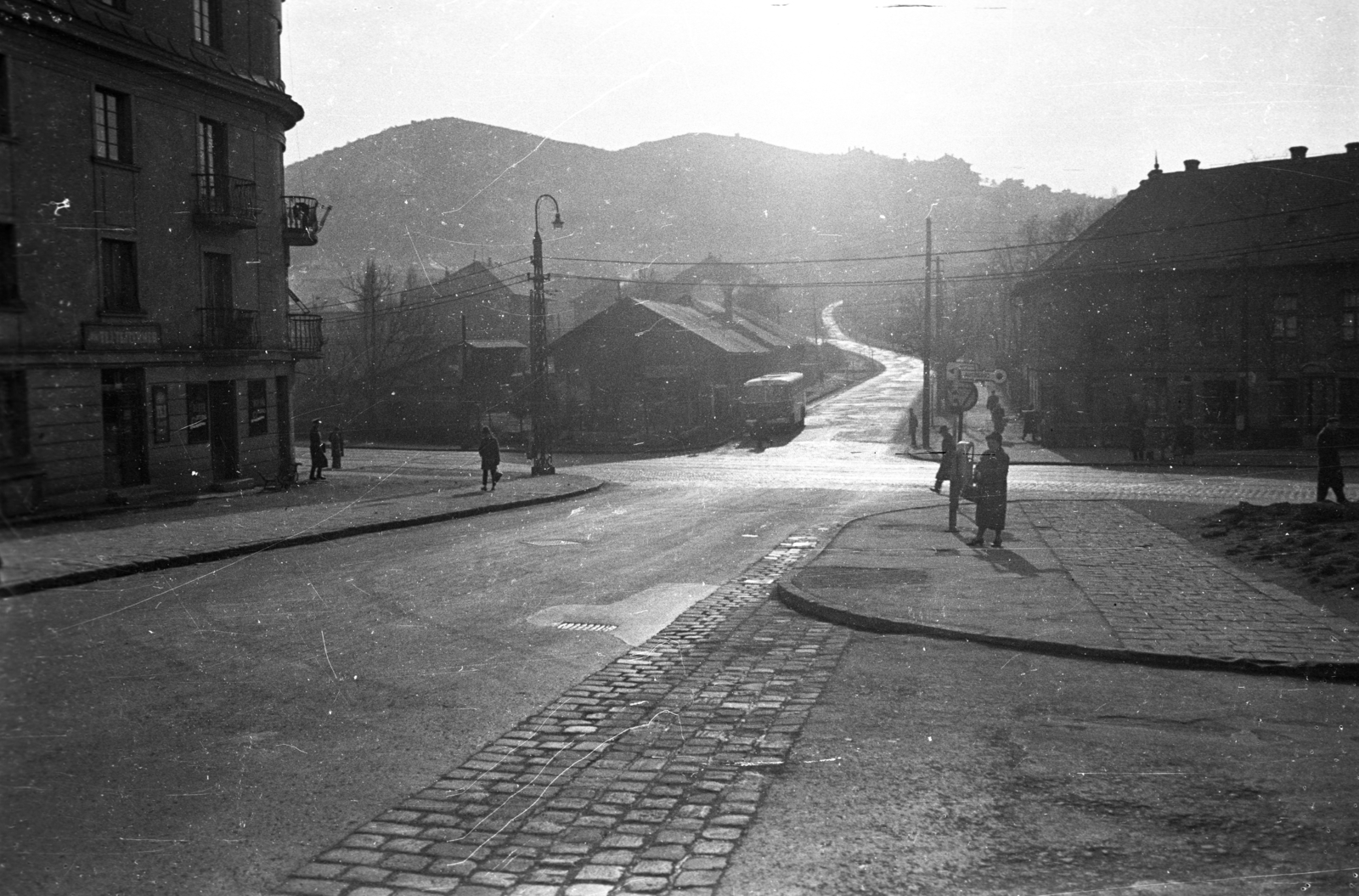
The intersection in 1960 in a photo by UVATERV (Photo: Fortepan / UVATERV)
By the 1970s, domestic car traffic had grown very significantly, and there was a privileged direction to which huge traffic flowed from time to time. It is no secret that this was the Budapest-Balaton route, which was connected to the capital by a twice two-lane highway to Balatonaliga - as a coincidence that the party resort was in Aliga- and from there to Zamárdi by a twice one lane clearway.
On Friday afternoon, - with a little exaggeration - half the city set off for Lake Balaton just for this traffic to return much more concentrated on Sunday afternoon. The motorists mostly chose the Erzsébet Bridge - Rákóczi route to Pest, because they could not go anywhere else, at most the Outer Ring Road or the very narrow Tunnel - Chain Bridge route could have been considered, but none of them had a real alternative to the widened Erzsébet Bridge - Rákóczi Road direction.
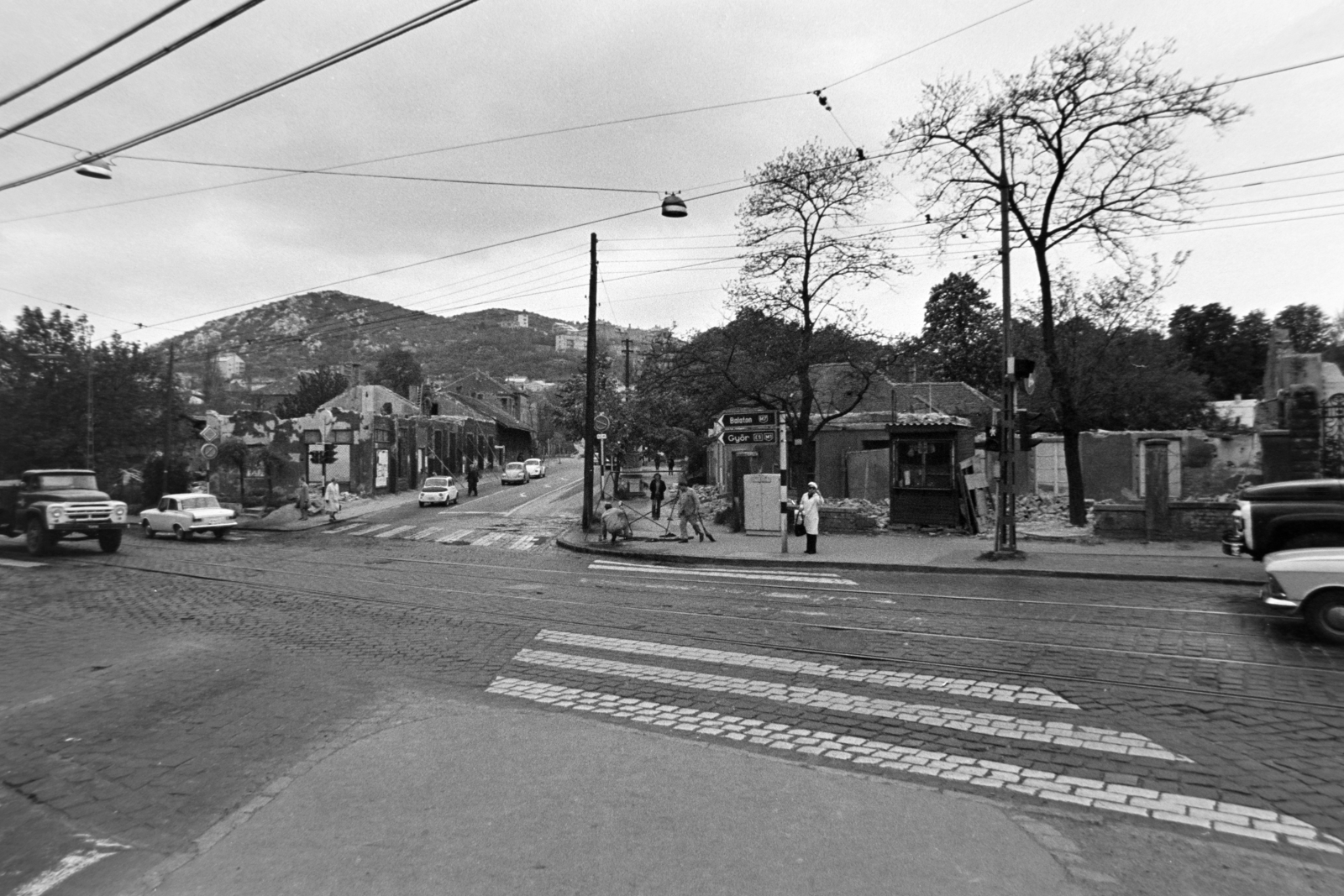
Construction began with demolition. (Photo: Fortepan / No.: 195752)
One of the narrowest cross-sections of this route in Budapest was the intersection of Budaörsi Road - Alkotás Street - Hegyalja Road, ie the BAH junction based on the acronym formed from the names of the incoming streets.
Already in the early 1970s, there were such problems that traffic could only be provided on weekends with forced solutions, so on Sundays the stop of tram 61 on Hegyalja Road was closed, traffic from Erzsébet Bridge was diverted to Avar Street - Csörsz Street.
The overpass planned for the junction provided an answer to this problem - it fits in perfectly with the transport policy of the period, as it was part of the development of Rákóczi Road - even the last implemented part of it.
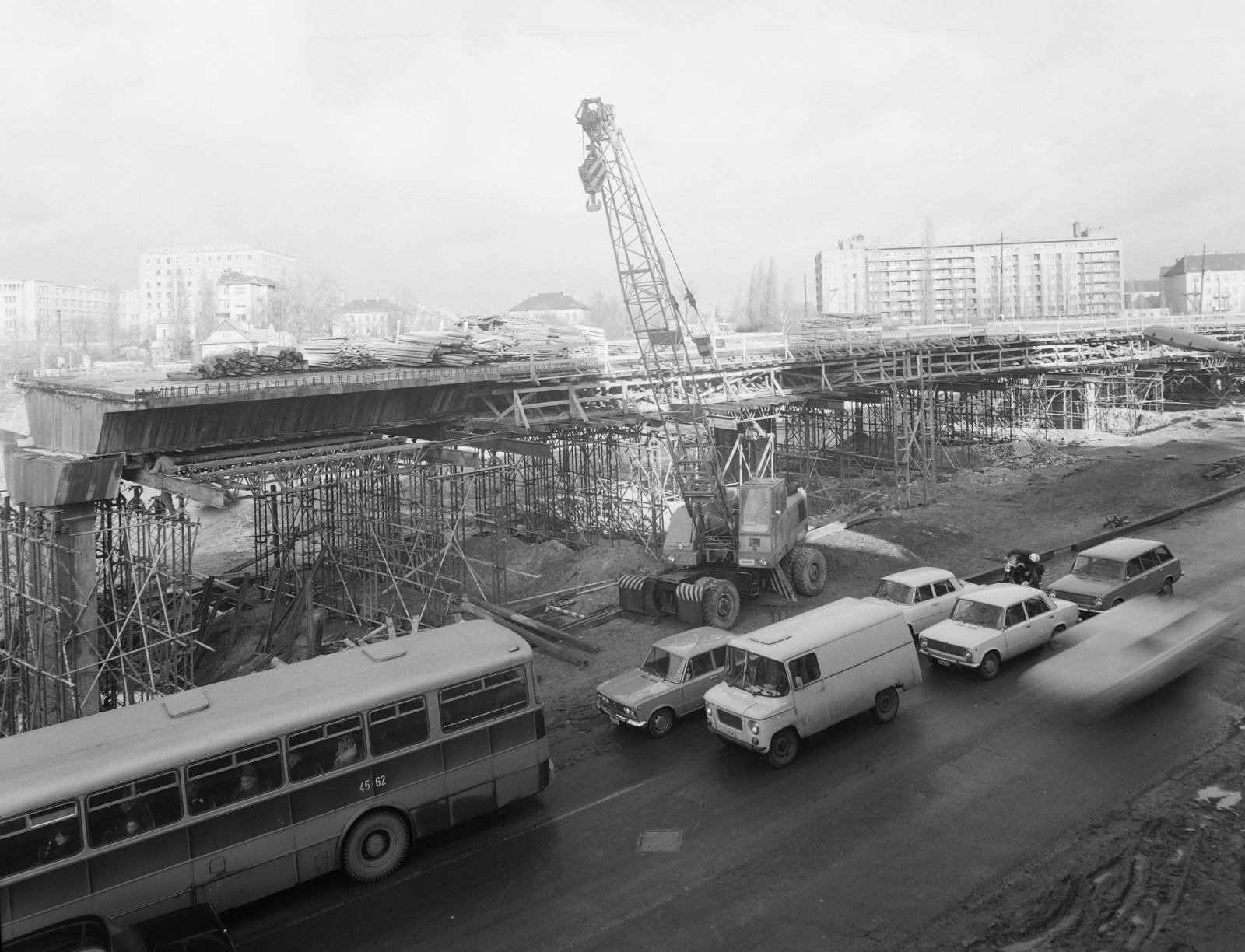
Construction site in 1975 (Photo: Fortepan / No.: 84825)
A tender was issued for the construction of the junction in 1971, but the investment did not begin until 1974, with demolitions first, as transport needed space. Therefore, a total of 73 flats, three shops, a kindergarten, workshops, warehouses, and the old customs house, which housed a Catholic church and parish were demolished, but ground from the sports fields of the University of Physical Education also had to be taken away. Construction of the overpass began in the second quarter of 1975 and was completed within a year and a half. The original deadline was May 1977, meaning this bridge was completed four months before the deadline, although the weather in the last few weeks was not favourable for the builders. As the Magyar Nemzet wrote about the transfer on 23 December 1976:
“We succeded! - said László Szabó, the installation manager of the Budapest Electric Works dealing with public lighting. - True, we were still looking for a cable at night, but now we have it. We promised it would be all ready by half past three in the afternoon - looking at your watch -. now it's only 28 minutes past 2 o'clock.
Due to the unfavourable weather of the last few weeks, everything was on a razor1s edge here more than once. From the auxiliary worker to the chief engineer Szabolcs Krisztán, who was in charge of the construction, everyone was just thinking: it has to be ready by 2:30 pm on Wednesday afternoon. ”
The built overpass has 2 × 1 lanes and connects Budaörsi Road with Hegyalja Road by a huge curve, so that it takes advantage of the rise of Hegyalja Road here.
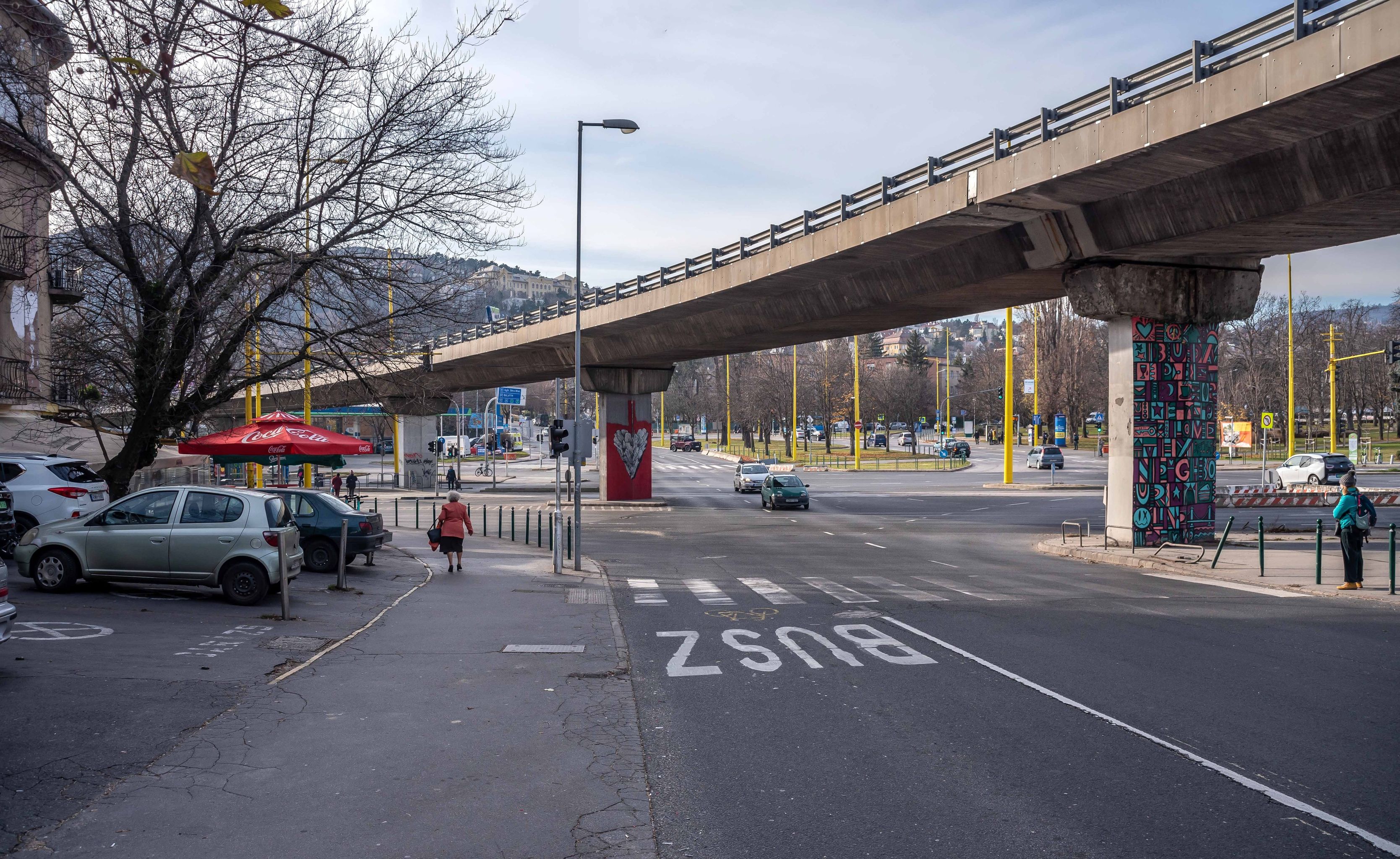
The overpass today (photo: Balázs Both / pestbuda.hu)
The 660-meter-long overpass was built by the Hídépítő Vállalat [Bridge Construction Company], and the total investment cost 200 million HUF at that time. It was handed over to traffic on 22 December 1976, and the press also recorded when and what kind of car crossed the overpass first. The notable vehicle was a Zsiguli [VAZ–2101], (registration number UB 71-91), which drove over the overpass 7 minutes after 3 o'clock.
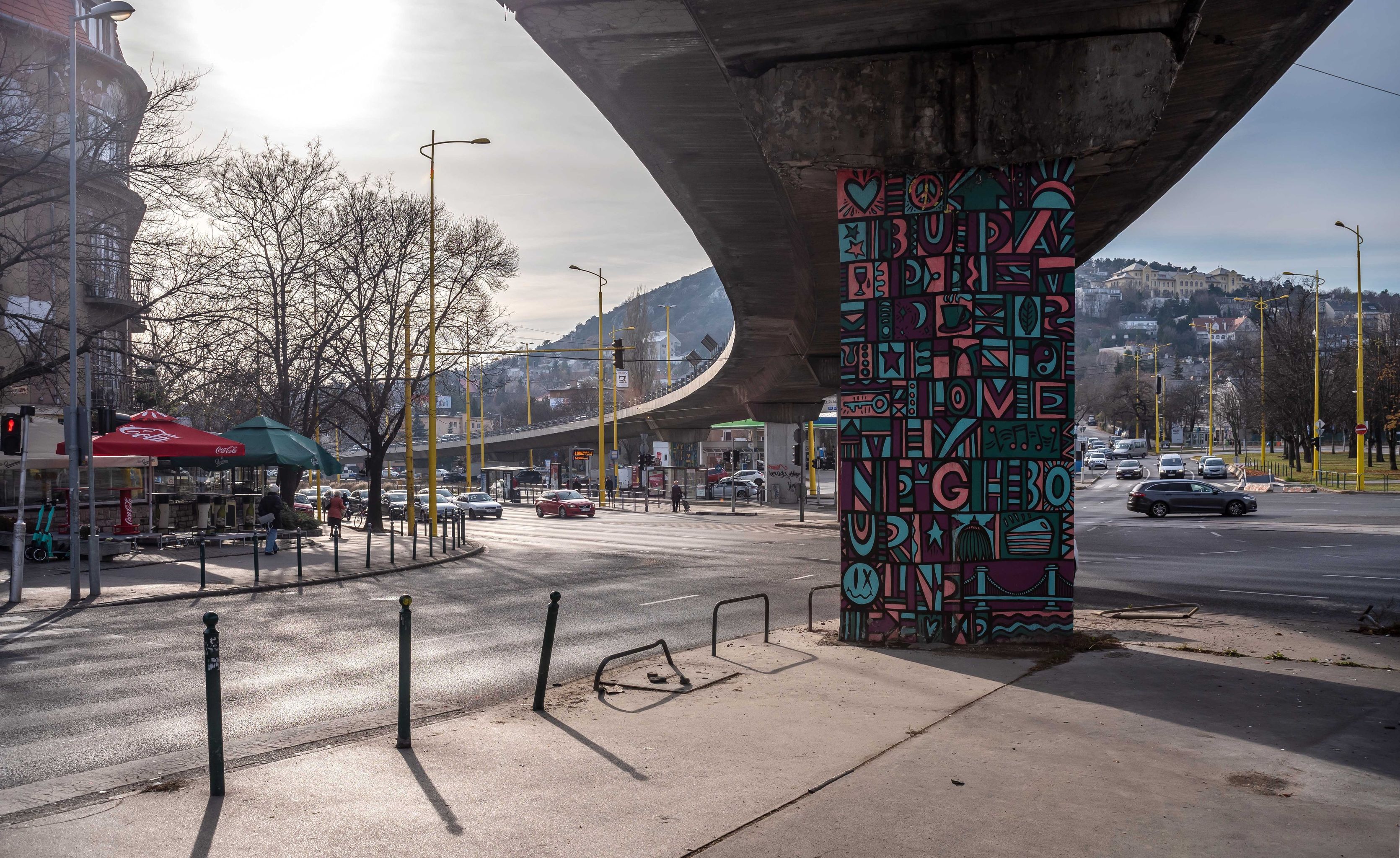
The columns of the overpass are decorated with public paintings (Photo: Balázs Both / pestbuda.hu)
Since then, the crossing traffic in Budapest has been served by the M0 and Hungária Boulevard. However, as long as the radical step in the capital's traffic management is not taken - if it ever happens - to significantly reduce the traffic on Rákóczi Road, there will be a need for the overpass of the BAH junction, which is not bad looking among its kind.
Moreover, a few years ago, its columns were decorated with cheerful paintings, namely works by Argentine artist Graciela Goncalves and English artist Luke Embdent.
Cover photo: The BAH junction (Photo: Balázs Both / pestbuda.hu)

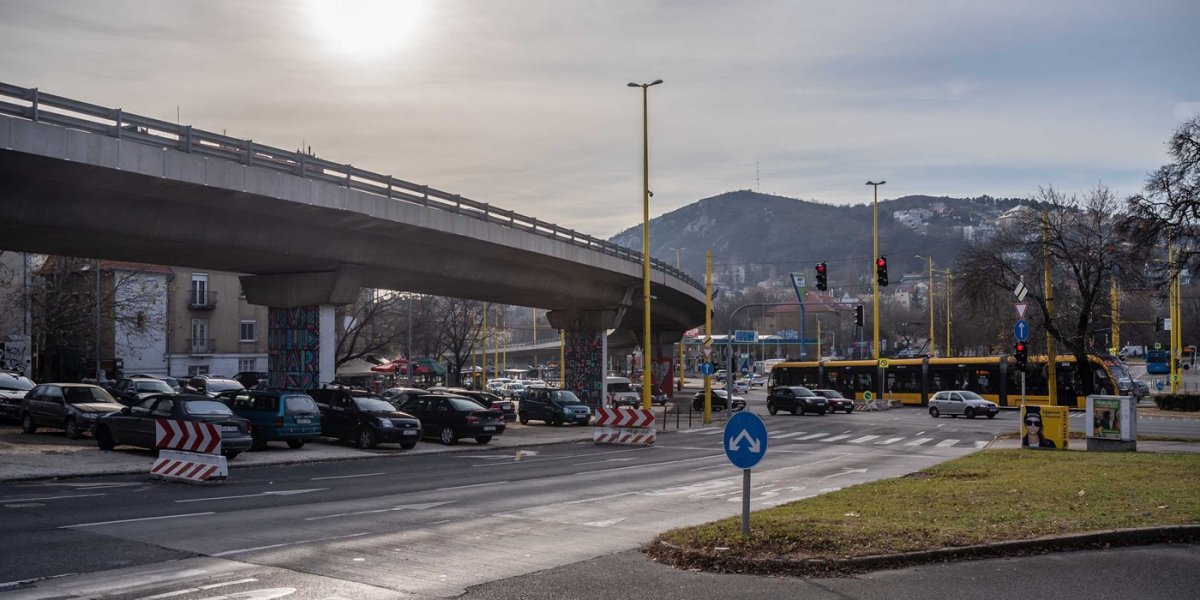


































Hozzászólások
Log in or register to comment!
Login Registration